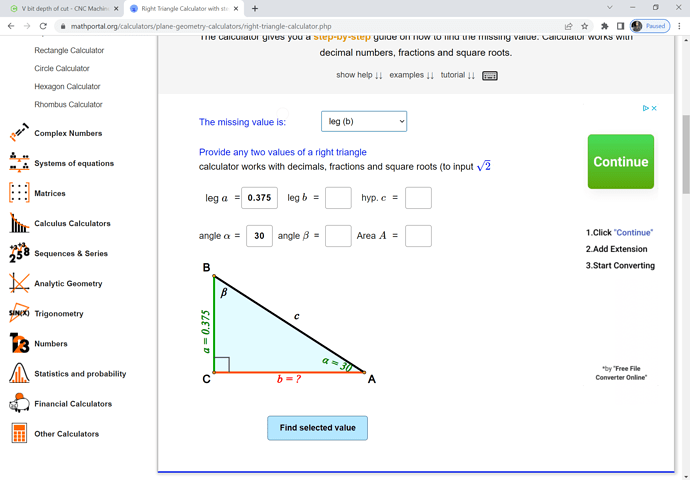Specifically, you know two values:
- diameter to which you wish to cut
- V angle
I always look this sort of thing up at:
so assume the V endmill is on its side, and half its angle equals angle alpha and the dimension a == half the width which we wish to cut to, so we are trying to determine length b — given for an example:
- 60 degree V endmill
- cutting to a width of 0.75"
We need to enter the values:
- alpha == 30 degrees
- a == 0.375"
and
b == 3/8" / tan(30 degrees)
tan of 30 degrees == 0.577350269
so we EDIT: correction divide (not multiply):
3/8" / 0.577350269
to get:
0.649519053
for the depth which we need to cut to.
For an example of drawing things up in profile and just setting the depth thus see
